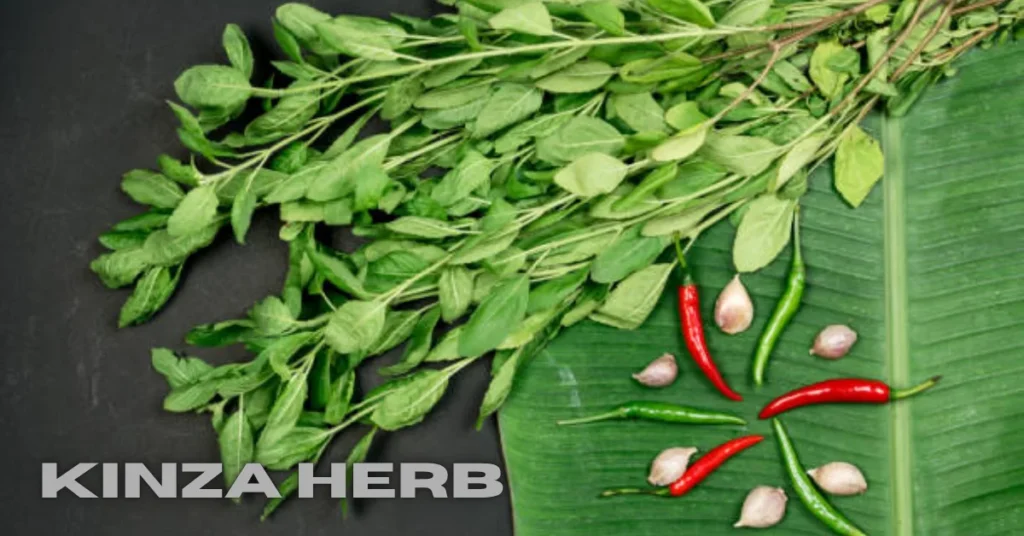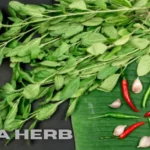Introduction to Kinza Herb
If you’re looking to spice up your meals and add a burst of flavor to your dishes, look no further than kinza herb. This vibrant green is more than just a garnish; it’s a culinary powerhouse that has secured its place in kitchens around the globe. With roots tracing back to ancient times, kinza offers a unique blend of taste and nutrition, making it an essential ingredient for food lovers everywhere. Whether you’re whipping up traditional recipes or experimenting with modern cuisine, incorporating this aromatic herb can elevate your cooking experience. Let’s dive into the world of kinza and discover why it’s captured the hearts—and palates—of many!
What is Kinza and where is it found?
Kinza, also known as coriander or cilantro in many parts of the world, is a vibrant herb that adds depth to various dishes. Its leaves have a fresh and lively flavor profile, making it an essential ingredient in numerous cuisines.
This versatile herb thrives in warm climates. You can find kinza flourishing across regions such as the Mediterranean, Southeast Asia, and parts of South America. It grows well in sunny gardens but can also adapt to pots on your balcony.
The plant produces delicate white flowers and round seeds that are harvested for their aromatic qualities. Both the leaves and seeds are widely used—each bringing unique flavors to culinary creations. Kinza’s global presence speaks volumes about its popularity among food lovers everywhere. Whether you’re enjoying Indian chutneys or Mexican salsas, this herb plays a starring role in elevating taste buds around the globe.
Nutritional Benefits of Kinza Herb
Kinza herb, also known as cilantro or coriander leaf, is packed with essential nutrients. It’s a rich source of vitamins A, C, and K. These vitamins play crucial roles in maintaining healthy skin and boosting the immune system.
This vibrant green herb also contains significant amounts of antioxidants. Antioxidants help combat free radicals in the body, promoting overall well-being.
Additionally, kinza provides dietary fiber that aids digestion. Including it in your meals can contribute to a healthier gut.
Minerals such as potassium and magnesium are present too. These minerals support heart health by regulating blood pressure levels.
Moreover, some studies suggest that kinza may have antimicrobial properties. This could enhance food safety when used fresh in dishes.
Incorporating kinza into your diet not only adds flavor but elevates nutritional value significantly.
Culinary Uses of Kinza in Different Cuisines
Kinza herb, often referred to as cilantro or coriander leaves, is a culinary gem cherished across various cuisines worldwide. In Indian kitchens, it’s a must-have for curries and chutneys, adding a fresh burst of flavor that balances spices beautifully.
In Middle Eastern dishes like tabbouleh and falafel, kinza delivers both aroma and color. It brightens up these rich flavors with its vibrant green hue.
Mexican cuisine also celebrates kinza; it’s essential in salsa and guacamole. The herb complements the heat of jalapeños perfectly.
Asian stir-fries elevate their flavor profiles with the addition of this fragrant herb. Its versatility allows chefs to experiment without boundaries.
Whether used as a garnish or hidden within sauces, kinza enhances every bite while bringing uniqueness to traditional recipes around the globe.
How to Grow and Use Kinza at Home
Growing kinza herb at home is simple and rewarding. Start with good quality seeds, which are readily available online or at local garden centers. Choose a sunny spot in your garden or opt for pots if space is limited.
Kinza thrives in well-drained soil enriched with organic matter. Plant the seeds about half an inch deep and water them lightly but consistently. Keep the soil moist, as kinza prefers a humid environment.
Once the plants reach about six inches tall, you can start harvesting leaves. Snip off what you need while allowing the rest of the plant to continue growing.
Incorporate fresh kinza into dishes like salads, curries, or soups for an aromatic kick. You can also dry the leaves to use later in seasoning blends or teas—making it a versatile addition to your kitchen pantry.
Health Benefits of Consuming Kinza
Kinza herb is more than just a flavorful addition to your meals. It packs a punch when it comes to health benefits.
Rich in antioxidants, kinza helps combat oxidative stress and may lower the risk of chronic diseases. Its anti-inflammatory properties contribute to overall wellness and can support joint health.
This herb is also known for its digestive benefits. Consuming kinza can alleviate bloating and aid in digestion, making it a great choice post-meal.
Additionally, kinza contains essential vitamins like A, C, and K. These nutrients are vital for maintaining healthy skin and boosting immune function.
For those watching their weight, including kinza in your diet can provide flavor without adding extra calories. This makes it an excellent herb for enhancing dishes while promoting healthier eating habits.
Conclusion: Why You Should Add Kinza to Your Diet
Kinza herb is more than just a flavorful addition to your meals; it’s a powerhouse of nutrition and culinary versatility. Its unique flavor profile can elevate dishes from various cuisines, making every meal an adventure for your taste buds. Whether you’re tossing it into salads, stirring it into soups, or garnishing main courses, kinza brings freshness and zest.
Beyond its deliciousness, kinza is packed with nutrients that support overall health. From antioxidants to vitamins and minerals, incorporating this herb into your diet can contribute positively to wellness. Plus, growing kinza at home isn’t too challenging—it’s an excellent way to ensure you have fresh herbs on hand whenever you need them.
By adding kinza herb to your daily meals, you not only enhance the flavors but also embrace a healthier lifestyle. This remarkable green has earned its place in kitchens around the world for good reason. Embrace the bold flavors and numerous benefits of kinza today—it might just become a staple in your kitchen as well!






